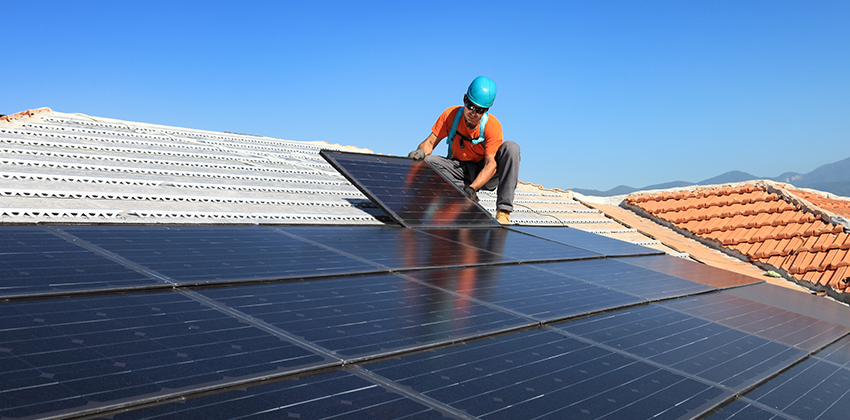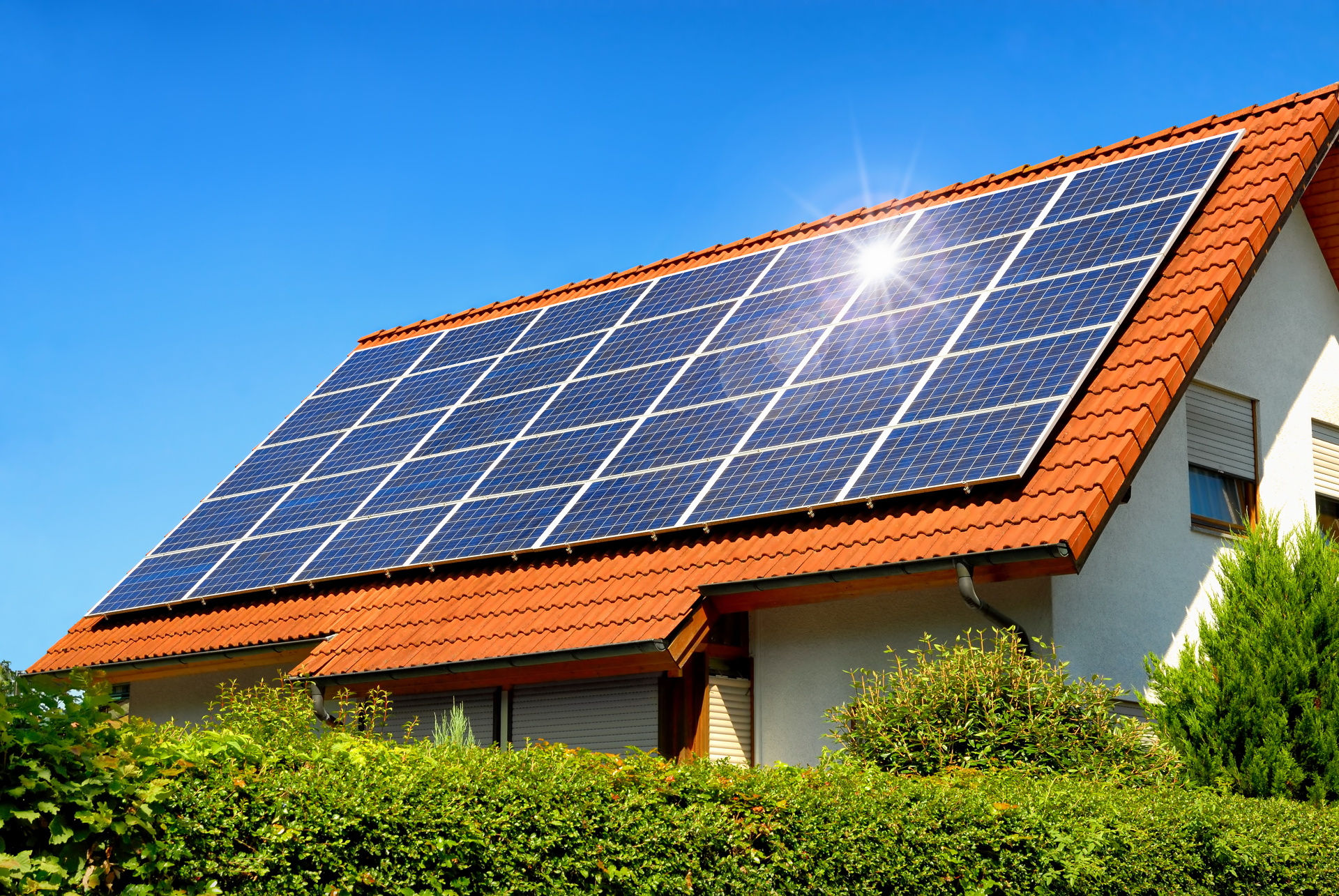Solar Power Panels: Large-Scale Photovoltaic Systems Can Considerably Minimize Energy Expenses For Businesses
Opening the Advantages of Commercial Solar Panels

Have you ever questioned why more organizations are turning towards commercial solar panels in their energy strategy? It's not almost going green-- though that's an engaging factor-- it's about harnessing a plentiful, totally free resource that can dramatically decrease operational expenses with time. Think of a factory roofing changed into a peaceful, powerful energy generator, calmly slicing regular monthly electricity costs while reducing carbon footprints.
Financial Advantages That Speak Volumes
Business solar panels offer a suite of financial benefits that can reshape a business's bottom line. Think about these key points:
- Decreased Energy Expenses: Solar power can balance out a significant portion of electricity usage, leading to instant cost savings.
- Return on Investment (ROI): Though initial installation can be substantial, the long-term cost savings often exceed the in advance costs.
- Energy Price Stability: Unlike fossil fuels, solar power isn't based on market volatility.
- Increased Property Value: Buildings equipped with solar systems tend to assess higher in worth.
Ecological Effect: More Than Just a Buzzword
Think of the last time you discovered a field of photovoltaic panels gleaming under the sun. It's a sight that symbolizes hope and obligation. Business solar panels significantly decrease greenhouse gas emissions, helping organizations line up with sustainability goals without compromising efficiency.
- Lower carbon footprint
- Decrease in dependence on nonrenewable energy
- Support for business social obligation initiatives
Functional Benefits That Typically Go Undetected
Beyond the obvious monetary and environmental perks, industrial solar panels offer operational advantages that numerous neglect. For example, solar installations can offer energy independence, minimizing vulnerability to power outages or utility rate hikes. This strength can be a game-changer throughout peak need periods or emergencies.
| Benefit | Explanation |
|---|---|
| Energy Dependability | Guarantees a constant power supply, minimizing downtime. |
| Low Upkeep | Industrial solar technology requires very little maintenance. |
| Scalability | Systems can broaden as energy requires grow. |
What's the Catch?

Is there a downside? Some might argue the in advance financial investment or space requirements. However if you peer beyond the surface area, the long-lasting benefits typically eclipse these difficulties. Consider it: in a world where energy costs unexpectedly vary, would not you want a stable, renewable source? The response may be clearer than you believe.
Eventually, business photovoltaic panels do not simply power buildings-- they empower organizations to picture a future where revenue and planet exist side-by-side harmoniously. Could this be the energy transformation your service has been waiting on?
Setup Process and Factors To Consider
Think of standing atop a business rooftop, the sun blazing overhead, panels gleaming like fragments of a futuristic mosaic. The installation process for business photovoltaic panels is far from an easy rooftop design-- it's an intricate symphony of engineering, precision, and insight. One slipup in the installing angle or circuitry layout can ripple into months of lost effectiveness and costly repair work.
Key Steps in Installation
- Site Assessment: Before the very first panel touches metal, a thorough assessment of the website's sun exposure, roofing structure, and shading patterns is critical. Does the roof slope favor optimum solar gain? Are nearby trees or buildings casting unpredictable shadows?
- System Style: Tailoring the panel layout to the service's energy demands and roofing system restraints involves sophisticated modeling tools. This is where theoretical energy output meets physical reality.
- Structural Support: Commercial roofing systems often need support to bear the weight and wind loads of the solar variety. Not representing this can result in drooping or disastrous failure during storms.
- Electrical Combination: Linking the panels to the building's electrical system demands professional knowledge of load balancing and inverter placement to reduce energy loss.
- Final Evaluation and Testing: The last step ensures everything operates flawlessly, but it's likewise when concealed defects frequently emerge.
Crucial Considerations for Success
- Roofing System Condition and Durability: Are you setting up on a roofing that will last another 20 years? It's a good idea to replace or fix the roof ahead of time to avoid eliminating panels prematurely.
- Weight Circulation: Not all roofs are developed equivalent. Comprehending the load-bearing capacity avoids structural damage and preserves security.
- Orientation and Tilt Optimization: Even a small discrepancy from the perfect panel angle can slash output by as much as 15%. Accuracy here pays dividends.
- Weather condition Patterns: How will local climate extremes-- hail, snow, or high winds-- impact the durability and performance of your system?
- Wiring Pathways: Planning circuitry routes to minimize voltage drop and avoid electro-magnetic interference is an often ignored yet crucial factor.
Expert Tips for a Perfect Installation
| Pointer | Why It Matters |
|---|---|
| Carry out a shadow analysis at different times of day and year | Guarantees optimum sunlight capture and avoids unanticipated dips in energy production |
| Usage micro-inverters instead of a single central inverter | Increases system durability; one panel's underperformance will not drag down the whole selection |
| Engage a structural engineer early in the process | Prevents costly surprises related to roofing stability and compliance |
| Label all electrical parts plainly | Speeds up troubleshooting and future upgrades |
Have you ever wondered why some solar installations appear to defy the elements for decades, while others falter after a few seasons? It's the hidden attention to information-- like confirming torque settings on mounting hardware or adjusting inverter settings to regional grid conditions-- that separates the remarkable from the average. Commercial solar panel installation is less about slapping panels on a roof and more about crafting a resistant, efficient energy environment tailored to the special pulse of each service.
Exploring the Ranges of Industrial Solar Panels
Picture walking into a vast field of photovoltaic panels, each shining under the sun with a distinct purpose. Business photovoltaic panels aren't a one-size-fits-all service. They can be found in different flavors, each tailored to different energy requirements and installation environments. Ever questioned why some panels appear bulkier while others appear streamlined and slim? Let's peel back the layers.
Monocrystalline Solar Panels: The Beauty of Performance
These panels, crafted from a single crystal of silicon, resemble a dark, practically black canvas extended across roofs and solar farms. Their consistent look isn't simply aesthetic-- it translates to greater performance rates, typically hovering around 20% or more. This suggests they transform a larger portion of sunlight into electrical energy, making them perfect for areas where every square inch matters.
Their production is energy-intensive, similar to molding a diamond from rough stone. For businesses with limited roofing area but high energy intake, monocrystalline panels typically become the go-to option.
Polycrystalline Solar Panels: The Mosaic of Affordability
Picture a mosaic, dynamic and speckled with numerous tones of blue. Polycrystalline panels are made from melted silicon pieces put into molds, resulting in a somewhat rough, less consistent look. They generally offer a little lower effectiveness-- around 15-17%-- but their production process is less wasteful and more economical.
When spending plan constraints loom big, and space is less of a premium, Solar Power For Home these panels strike a fine balance in between in advance investment and performance.
Thin-Film Solar Panels: The Light-weight Contenders
Ever seen photovoltaic panels that look like versatile sheets rather than rigid panels? Thin-film innovation deposits photovoltaic product onto substrates like glass or metal, creating lightweight, bendable panels. While their performance lags behind crystalline types-- frequently listed below 15%-- they stand out in special applications where conventional panels fail.
Envision roofs with unusual shapes or large facade installations where weight and flexibility determine choices. Thin-film panels shine here, although they require more area and mindful consideration of long-lasting output degradation.
Key Considerations for Industrial Installations
- Energy output per square foot: Critical for maximizing power in constrained spaces.
- Durability: Panels withstand weather condition extremes; material composition affects life expectancy.
- Temperature level coefficient: Important in hot climates as some panels lose efficiency when temperature levels rise.
- Setup complexity: Thin-film panels can minimize structural load but may make complex circuitry.
Expert Tips for Choosing the Right Panel Type
- Evaluate your roofing system's load-bearing capacity before selecting heavier monocrystalline ranges.
- Consider the angle and orientation of your setup site; some panels carry out much better under diffuse light.
- Look beyond performance numbers-- aspect in destruction rates and guarantee terms.
- Participate in early discussion with engineers about prospective shading problems that can considerably decrease output.
In the quest for the perfect business solar panel, the devil is truly in the information. Are you prepared to harness the sun's power with precision instead of guesswork?
Environmental Impact and Energy Cost Savings of Commercial Solar Panels
Imagine a vast rooftop, as soon as a barren stretch of asphalt, now gleaming with rows of commercial photovoltaic panels. This transformation isn't simply visual; it's a powerful declaration versus the unrelenting usage of fossil fuels. Business solar ranges can slash carbon footprints in methods that may shock even skilled energy experts. What does that truly imply for the environment and your bottom line?
Carbon Footprint Reduction: Beyond the Numbers
Every kilowatt-hour produced by solar panels represents a small victory versus greenhouse gas emissions. On a bigger scale, a business center equipped with solar can reduce CO2 emissions by lots each year-- equivalent to planting hundreds of trees. Yet, the true effect extends beyond simple stats. Consider the ripple result: less emissions indicate cleaner air, healthier neighborhoods, and a more stable climate.
Energy Performance: The Quiet Game-Changer
Performance in solar technology has actually leapt forward, but even the most innovative panels face ecological hurdles throughout manufacturing. What typically escapes attention is how savvy system style can mitigate these concerns, taking full advantage of energy output while lessening ecological disruption. Orienting panels with accuracy and including energy storage solutions can transform variable sunlight into steady power, cutting reliance on grid electricity.
Specialist Tips for Maximizing Energy Cost Savings
- Enhance tilt and orientation: Even a few degrees can impact efficiency by up to 15%.
- Incorporate clever inverters: They enhance grid compatibility and minimize energy losses.
- Take advantage of energy management systems: Real-time tracking recognizes inadequacies before they escalate.
- Scale gradually: Phased installations allow adjustment to developing energy demands without squandering resources.
Ecological Compromises and Long-Term Vision
Solar panels do not spring from thin air; their production includes unusual minerals and energy-intensive processes. This truth nudges stakeholders to believe beyond instant gains. What if end-of-life recycling for panels were structured industry-wide? The capacity for circular economy principles to reshape the solar sector is enormous, appealing even greater ecological dividends in the future.
Measuring Impact: A Quick Recommendation Table
| Metric | Common Yearly Industrial Solar Output | Equivalent Environmental Benefit |
|---|---|---|
| Energy Produced (kWh) | 500,000 | Powering ~ 45 typical homes for a year |
| CO2 Emissions Prevented (loads) | 350 | Planting ~ 300 mature trees |
| Energy Cost Savings | ~$ 40,000 | Reinvestment into sustainable operations |
When weighing the environmental effect of commercial solar panels, ask yourself: are you prepared to envision energy not just as an energy, but as a driver for eco-friendly renewal? The response shapes how companies harness the sun's power today-- and tomorrow.